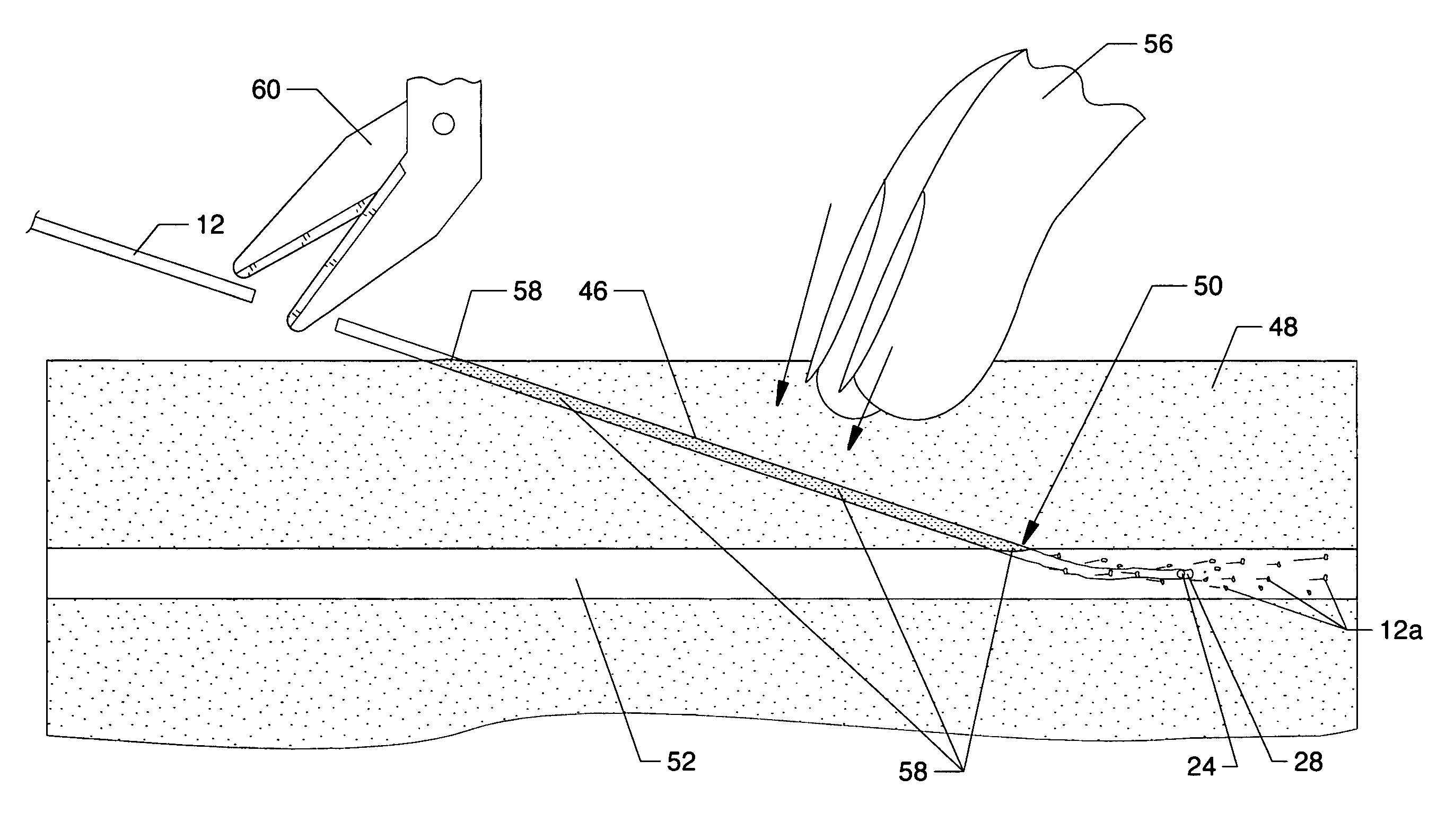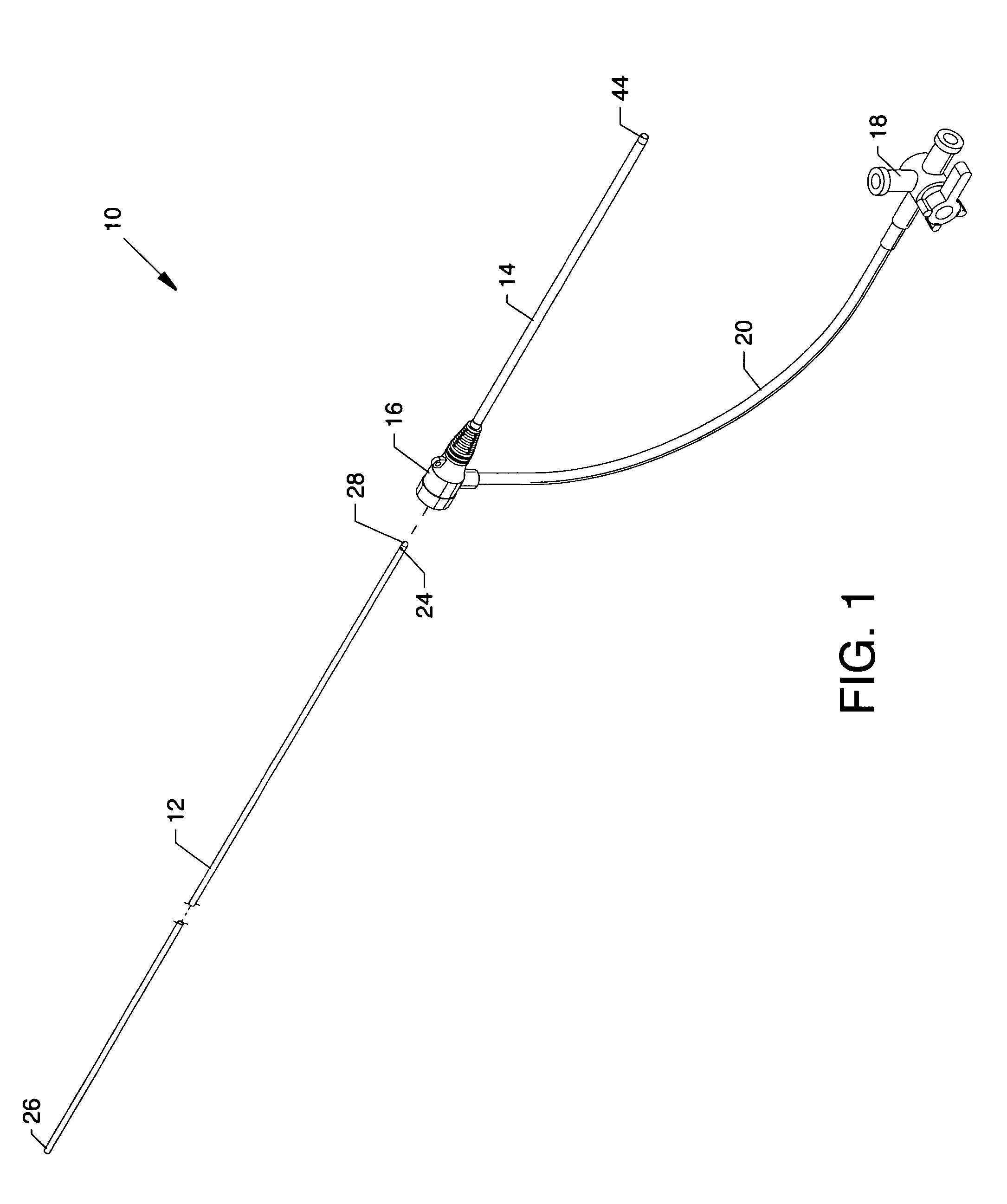Closure device
a technology of a device and a stent, which is applied in the field of stents, can solve the problems of blockage of flow to the distal artery, unfavorable ease of use, and uncertainty in positioning such a device, and achieve the effect of reducing compression times
- Summary
- Abstract
- Description
- Claims
- Application Information
AI Technical Summary
Benefits of technology
Problems solved by technology
Method used
Image
Examples
Embodiment Construction
[0040]FIG. 1 is an exploded isometric view and FIG. 2 is an assembled isometric view of the arterial closure device 10, the present invention, which includes a resorbable tubular plug 12, a delivery sheath 14 in the form of a flexible tube, a connector fixture 16, and a valve 18 connected to the connector fixture 16 by a flexible tube 20. The resorbable tubular plug 12 can be made of cellulose with or without starch, collagen, a combination of sugar and polyvinyl alcohol (PVA) or other quickly resorbable materials. The use of cellulose or other suitable material provides a hemostatic agent to aid in rapid hemostasis. The resorbable tubular plug 12 is in the form of a tube and includes a lumen 22 (FIG. 3), and also includes a hole 24 extending through the wall of the resorbable tubular plug 12 providing communication between the lumen 22 and the environment exterior to the resorbable tubular plug 12. The resorbable tubular plug 12 includes an open proximal end 26 and a closed distal ...
PUM
 Login to View More
Login to View More Abstract
Description
Claims
Application Information
 Login to View More
Login to View More - R&D
- Intellectual Property
- Life Sciences
- Materials
- Tech Scout
- Unparalleled Data Quality
- Higher Quality Content
- 60% Fewer Hallucinations
Browse by: Latest US Patents, China's latest patents, Technical Efficacy Thesaurus, Application Domain, Technology Topic, Popular Technical Reports.
© 2025 PatSnap. All rights reserved.Legal|Privacy policy|Modern Slavery Act Transparency Statement|Sitemap|About US| Contact US: help@patsnap.com



